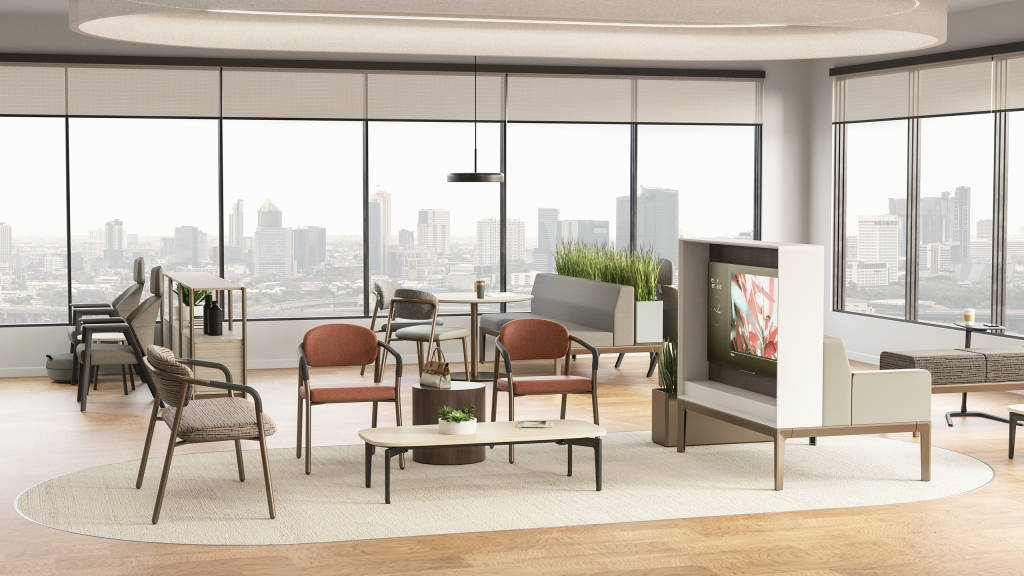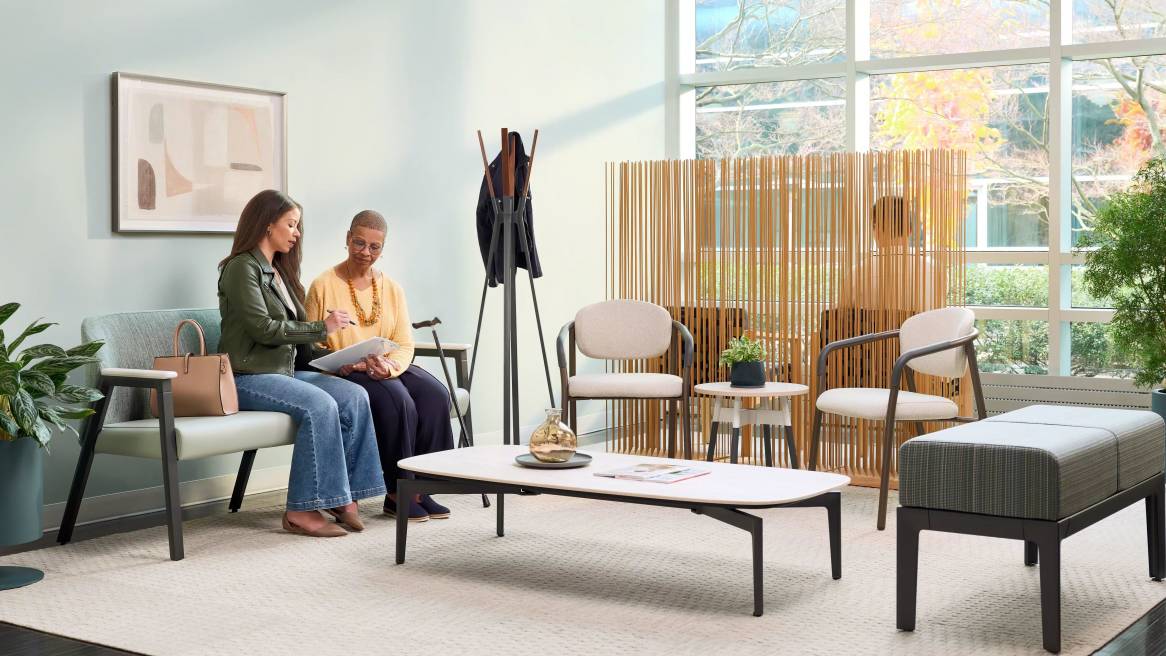The Evolving Waiting Experience
Six tensions we learned about healthcare waiting spaces after hearing from real patients across the U.S.
“We went for an emergency unrelated to an illness and we were surrounded by people coughing and sneezing – it was gross,” said an anonymous patient. “It was crowded, and I almost couldn’t even find a seat,” said another. Other patients found their waiting spaces drab, unaccommodating – and sometimes, even downright inappropriate. “I could hear every word being said between the receptionists and the patients checking in, and it was information that shouldn’t have been shared.”
These are just a few of the many real stories and tensions people shared with Steelcase Health as part of a new patient survey to better understand waiting experiences – research that spanned 135 interviews across seven different regions of the U.S. Despite its wide-ranging scope, two commonalities remain consistent: patients feel healthcare waiting spaces (in all its forms) should be places they and their families feel safe, welcomed and valued – but that they often don’t.
“I’d change all of it, if I could. I would have it be much more like a living room setting, with relaxing music playing – not just a TV playing medication ads on a loop.”
Surveyed patient

Patient feedback could be summed up into six key pillars of expectation – areas in which healthcare facilities could find room for improvement.
- Protection from germs – People are concerned about being too close to others while they are sick – or others are sick. “I don’t really like sitting with a lot of people, especially if they’re sick or if they’re coughing,” said one patient. “We don’t really know what they have, so it’s really kind of sketchy just sitting there.”
- A welcoming, comfortable environment – People are looking for comfortable seating, but also a calm, inviting space that makes them feel welcome. “Make it feel a little bit more homey, make it feel a little bit more like you’re not in a sterile environment,” said one patient.
- Help managing anxiety and stress – Most healthcare visits aren’t pleasant. They can be very stressful and the environment can do things to make that better – or worse. One patient described the experience like this: “It’s always that anticipation – that curiosity – what’s going to happen? What’s going to be said? Did the blood work come back wrong? I think it’s more of an anxious environment.” For many people, waiting in impersonal spaces on uncomfortable chairs for extended periods of time can add stress to the mental burden they are already feeling and they recognize it. it.
- Support a productive waiting time – Patients need their phones and devices. They provide entertainment, but more importantly, communication, connection and allow patients to get work done. Patients need easy, close access to power and internet access to ensure their devices work properly. “They don’t get very good Wi-Fi service where they are at, and so it’s very hard to connect. And if you want to use your cell phone while you’re waiting, it can be difficult.”
- Provide acoustic privacy – Lobbies and waiting areas at hospitals and doctors’ offices don’t always provide the acoustic privacy people need, like sensitive medical conversations. Patients can feel exposed talking about their medical issues when they are within earshot of others. “I had no concern in the exam room about privacy. However, while I was waiting in the front lobby, I could hear every word of the conversations between the front desk and people who were checking in.”
- Offer seating options for every ‘body’ – Patients and their families come in all shapes, sizes and abilities, yet most waiting areas provide a standard waiting room chair that is designed for a limited range. “The chair just looked cold and hard, and I had no desire to sit in it. I instead leaned against the exam table. The exam table also doesn’t seem like something that you should get up and sit on, even though it’s the only cushioning in the room.”

Designing a Better Waiting Experience
The challenge for healthcare is evolving to meet the widening range of patient needs while balancing economic pressures. Based on this new body of research Steelcase Health has identified five design principles to design warmer and more welcoming patient waiting spaces that better support healing and alleviate many of the concerns patients identified in the survey.
- Design for physical + psychological comfort – Create spaces that accommodate all users and promote physical wellbeing, psychological wellness, healing and safety while supporting human interactions.
- Design for productive waiting – Design for ways to help patients stay active and occupied to the level they choose throughout the healthcare journey.
- Design for an intuitive patient experience – Provide transparent cues and consistent physical and digital brand interactions to inform and improve the patient experience.
- Design for flexibility – Plan for spaces that can be changed by patients, family members, clinical teams or facilities staff, to meet everyone’s needs.
- Design for durability + sustainability – Select furniture that provides quality, durability and longevity.

Experience Our Spaces
We invite you to learn more about those principles and take the next step toward creating your ideal healthcare spaces and experiences. Connect with us to schedule an expert-guided virtual tour of our newest spaces for healthcare from waiting spaces to patient rooms, and everything in between.


